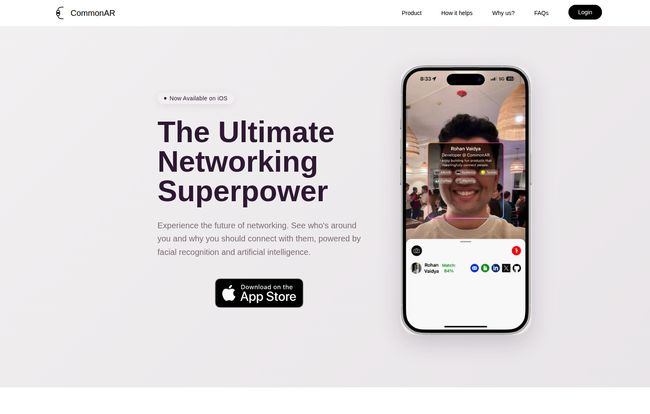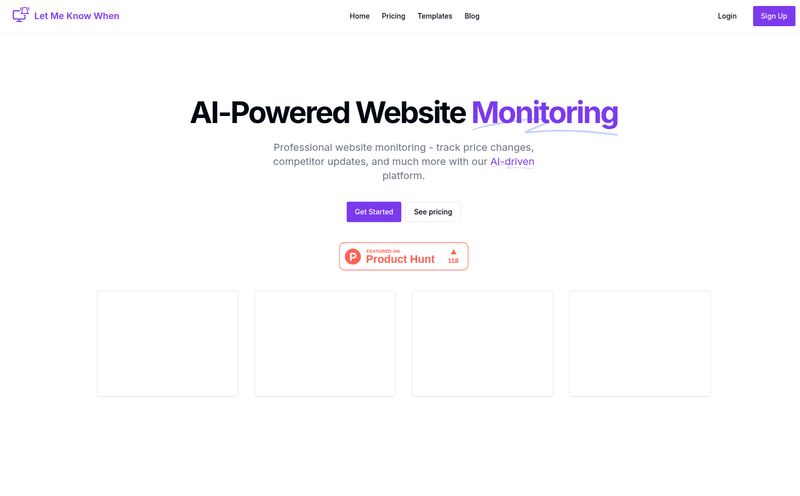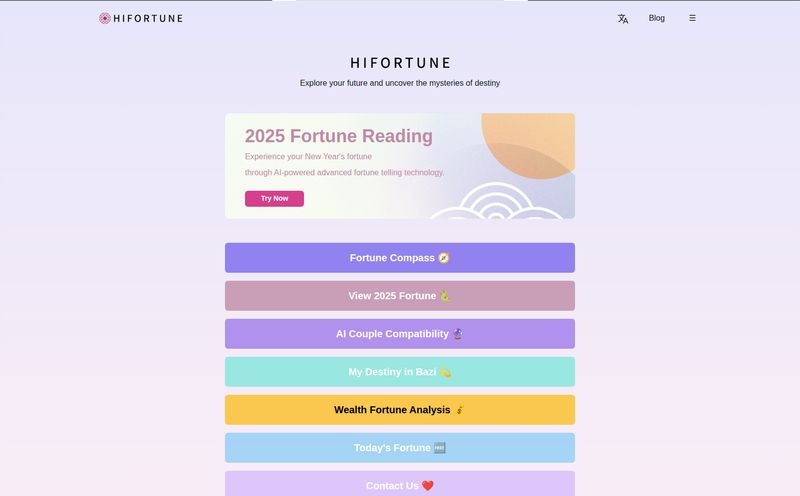You know the feeling. You’re at a conference, a cup of lukewarm coffee in one hand, a plate of questionable pastries in the other. The room is buzzing, but you're just... standing there. You're surrounded by hundreds of potentially brilliant connections, future clients, or maybe even your next boss. But breaking the ice feels like trying to chop down a redwood with a plastic spoon.
I've been in the SEO and digital marketing game for years, and I've been to more networking events than I can count. They all have the same script. The hesitant eye contact, the forced smile, the dreaded, "So... what do you do?" followed by a frantic exchange of buisness cards that you both know will end up in a desk drawer. It's a dance, and honestly, most of us have two left feet.
But what if you had a co-pilot for this stuff? Something that could whisper in your ear, "Hey, that person over there also geeks out about Google's latest algorithm update. You should talk to them." That’s the promise of a new tool that’s been on my radar: CommonAR.
What on Earth is CommonAR?
Okay, let's get the techy bit out of the way. CommonAR is an iPhone application that uses augmented reality (AR) to change how we network at in-person events. Think of it like a superpower. You hold up your phone, and instead of seeing just a crowd of people, you see floating profiles over their heads with key info—their name, their company, and what they're into. It’s like having X-ray vision for professional interests.
But it's not just about identifying people. The real magic, in my opinion, is the AI. The app analyzes everyone's profiles and serves up AI-curated conversation starters. It moves beyond the generic stuff and gives you a genuine, personalized hook to start a real conversation. It's a fascinating concept that tries to solve the two biggest problems of networking: who to talk to and what to talk about.
The Awkward Dance of Traditional Networking
For years, we've been trying to 'hack' networking. First, it was the paper business card. Effective, I guess, but they get lost, bent, and who really wants to manually enter that info into their contacts? Then came QR codes, which are a bit faster, but still feel clunky. You have to pull out your phone, open the camera, line it up… it disrupts the flow of conversation.
CommonAR's whole pitch is that it lowers this friction. It aims to be more natural than fumbling with codes and more informative than just a name tag. In their own words, they're taking on:
- Face-to-face ambiguity: Where you have no idea who is who in a crowd.
- Clunky QR Codes: Which are a pain to generate and scan.
- Expensive NFC Cards: A cool but pricey alternative that isn't widely adopted.
- Outdated Paper Cards: The classic, but let's be honest, it's 2024.
It's an ambitious goal. They're not just trying to replace a tool; they're trying to replace a long-standing, if flawed, social ritual.
How CommonAR Changes the Game
The experience is designed to be pretty straightforward, which is something I always appreciate. No one wants to be debugging an app while trying to look cool and professional.
Getting Started: Your Digital Handshake
First up, you create a profile. This is your digital business card on steroids. You fill in the usual stuff – name, company, title – but also your interests, what you're looking for, and what you can offer. This data is the fuel for the whole system, so the more you put in, the more you get out.
The Magic of AR and AI
Once you're at an event, this is where it gets fun. You open the app, and through your camera, you see the world layered with information. Spot someone across the room you want to talk to? A quick glance at their CommonAR profile tells you they're a PPC specialist who loves hiking. Boom. Your AI co-pilot might suggest, "Ask them about their favorite local trail after you discuss CPC strategies." It’s a beautifully simple way to find common ground. No more awkward silences.

Visit CommonAR
Seamless Integrations for Event Organizers
Here’s something that really caught my eye as a professional. They've built a Chrome extension that integrates with Luma, a popular platform for hosting events and workshops. This is smart. Event organizers can instantly import their attendee list into CommonAR. You can also upload a simple CSV file. This removes a massive barrier to adoption. If an organizer can get everyone set up with one click, people are much more likely to actually use the app on the day.
My Honest Take: The Good, The Bad, and The AR
Alright, no tool is perfect. As much as I'm excited by the potential, I've got to be real about its current state. Let's break it down.
What I Really Like
The core promise of reducing networking friction is huge. Anything that helps me avoid another conversation about the weather is a win in my book. The AI-powered icebreakers are genuinely clever. It’s not just tech for tech’s sake; it’s technology applied to a very human problem. I also have to give them a nod for prioritizing privacy. In an age where our data is treated like currency, their commitment to keeping it secure and user-controlled is a big plus. It makes the whole thing feel less creepy and more like a helpful assistant.
Where It Falls a Bit Short
Now for the reality check. The biggest, most glaring issue right now is that CommonAR is only available on iOS. In the real world, events are a mixed bag of iPhones and Android devices. This immediately cuts out a huge chunk of potential users and makes it a non-starter for many event organizers. I really hope an Android version is on their roadmap, because without it, it's a tough sell.
The second challenge is the classic network effect. The app is only as good as the number of people using it at an event. If only 10% of attendees have a profile, its usefulness plummets. This is where the Luma integration is so critical, but it's still an uphill battle for any new platform.
The Million-Dollar Question: What's the Cost?
This is the part where I'd usually break down a pricing table, but CommonAR is playing it a bit close to the chest. As of writing this, the CommonAR app is free to download from the App Store for individual users. For event organizers looking to integrate their events, the pricing isn't publicly listed on their website. This typically suggests a custom pricing model based on the size and needs of the event. You’d likely have to reach out to them for a quote. While I'd prefer transparent pricing, this approach is common for B2B-focused services.
Is CommonAR the Future?
So, is CommonAR the magic bullet that will kill awkward networking forever? Maybe not... yet. But is it a massive step in the right direction? Absolutely. It’s a glimpse into a future where technology doesn't isolate us but actually helps us connect on a more human level.
Despite its current limitations (I’m looking at you, Android users), the idea is solid gold. It’s ambitious, clever, and tackles a pain point that nearly every professional has felt. I'm genuinely excited to see how it develops. Once it goes cross-platform, it could very well become the new standard for how we connect at in-person events. Watch this space.
Frequently Asked Questions
- How does CommonAR actually work?
- It's an iPhone app that uses your camera to recognize other attendees at an event. It then overlays their professional profile (name, company, interests) in an augmented reality view. It also uses AI to suggest personalized conversation starters based on shared interests.
- Is CommonAR available for Android users?
- No, not at the moment. Currently, CommonAR is an iOS-exclusive application. This is one of its main limitations for widespread adoption at events with diverse attendees.
- How does the app handle my privacy and data?
- According to their site, privacy is a top priority. Your data is not sold, and your location is only used to enable the AR experience during the event. You have control over what information you share on your profile.
- What makes this better than swapping LinkedIn QR codes?
- The key difference is the proactive discovery and icebreaker aspect. Instead of needing a one-on-one exchange to scan a code, you can survey the entire room to see who you're most compatible with professionally. The AI conversation starters also remove the initial awkwardness, which a QR code doesn't solve.
- How do event organizers get attendees on the platform?
- Organizers can use a Chrome extension to integrate with Luma events, which automatically invites and sets up attendees. They can also upload a CSV file of their attendee list for easy onboarding.
- What is the pricing for CommonAR?
- The app is free for individual attendees to download and use. For event organizers, pricing is not publicly listed, suggesting a custom quote is required based on the event's needs.



